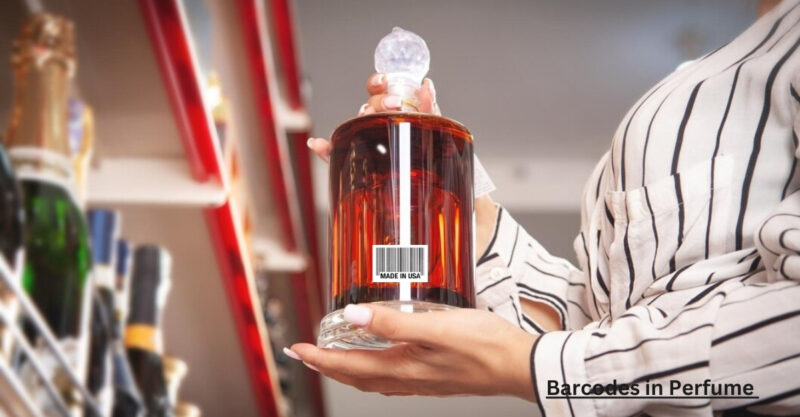Barcodes in perfume industry, product efficiency is key to success in today’s fast-paced world, especially for companies in the fragrance sector. In the perfume business, barcodes are essential for optimising procedures and guaranteeing smooth operations.
Introduction to Barcodes in the Perfume Industry
Perfume is only one of several retail industries that use barcodes. They encode crucial product information using a sequence of parallel lines with different thicknesses and spacings. The use of barcodes has greatly improved inventory management, monitoring, and sales transactions by providing unique IDs.
Importance of Barcodes for Perfumes
Keeping precise inventory records and monitoring product movements is of utmost importance in the highly competitive perfume sector. Retailers and manufacturers can keep tabs on inventory, sales, and supply chain activities with the help of barcodes, which provide a standardised way to encode product information.
Understanding the Basics of Barcode Technology
What is a barcode?
A barcode is a graphic representation of data that machines can read. It usually encodes alphanumeric letters using black bars and white gaps of varied widths. Universal Product Codes (UPCs) and European Article Numbering (EANs) are the two most popular barcode symbols in the fragrance business.
Types of Barcodes Commonly Used in Perfumes
Makers and sellers of perfume frequently use barcodes like UPC-A, UPC-E, EAN-13, and EAN-8 to store product information. The manufacturer code, product code, and check digit are unique identifiers that are contained in these barcodes. This allows for the correct identification and tracking of fragrances.
The Role of Barcodes in Supply Chain Management for Perfumes
Barcodes are an integral part of the perfume industry’s intricate supply chain, helping with logistics, order fulfilment, and inventory control. Barcodes allow for the easy monitoring of fragrances from their manufacturing facilities to retail outlets by embedding vital product characteristics like SKU numbers, batch numbers, and expiration dates.
How Barcodes Enhance Inventory Management in the Perfume Industry
Automating inventory management procedures with barcode technology enhances efficiency and reduces human mistakes. To optimise stock levels and make proactive decisions, perfume companies may utilise barcode scanners to swiftly scan goods, update inventory data in real-time, and detect stock shortages or excesses.
Barcode Implementation in Perfume Manufacturing
From sourcing raw materials to packaging completed perfumes, barcodes are used throughout the whole production process. Perfume bottles are given unique barcodes so that producers can trace them as they go through the production process, quality assurance inspections, and distribution routes.
Benefits of Using Barcodes for Tracking and Tracing Perfumes
There are several advantages to using barcodes for scent tracking and tracing, such as increased supply chain visibility, efficiency, and precision. Retailers may easily identify real products, access product information, and check for regulatory compliance by scanning barcodes.
Barcode Scanners and Their Significance in Retailing Perfumes
Barcode scanners are lifesavers in retail settings, facilitating quick and easy checkouts for consumers and better inventory management for companies. Perfume barcodes may be quickly and easily scanned at point-of-sale terminals by merchants using either portable or fixed scanners. This allows for the immediate recording of sales transactions and the updating of inventory databases.
Ensuring Authenticity and Combating Counterfeiting with Barcodes
The perfume business faces a major threat from counterfeiting, which reduces income, waters down brands, and raises questions about consumer safety. By offering a trustworthy method of product verification and tracking, barcodes aid in the fight against counterfeiting. Customers may rest certain that they are buying authentic fragrances from authorised vendors by checking the barcode data.
Challenges and Limitations of Barcode Technology in the Perfume Industry
Although barcodes have many benefits, they can be difficult to use in some situations, such as when there is a poor internet connection or the labels are damaged or impossible to see. The perfume business uses a wide variety of package styles and materials, and barcode technology may have trouble keeping up. This calls for creative solutions.
Future Trends in Barcode Technology for Perfumes
The use of barcodes in the perfume business appears to have bright prospects as technology progresses. New technologies like 2D barcodes, RFID (Radio-Frequency Identification), and blockchain-based solutions might make the perfume supply chain more secure, transparent, and environmentally friendly.
Tips for Choosing the Right Barcode System for Perfume Businesses
Important considerations for perfume companies looking to use a barcode system include scalability, infrastructure compatibility, and regulatory compliance. In order to successfully install customised barcode systems, firms might benefit from collaborating with seasoned barcode solution providers to determine their unique requirements.
Case Studies Showcasing Successful Barcode Implementation in Perfume Brands
To prevent counterfeiting, improve consumer experiences, and streamline operations, some perfume manufacturers have successfully used barcode technology. For other companies in the fragrance sector considering using barcode solutions, case studies showcasing these achievements might provide useful information.
Conclusion
Finally, barcodes are essential in the perfume sector for reliable product verification, inventory management, and supply chain operations. Perfume companies may increase operational efficiency, boost consumer happiness, and remain competitive by utilising barcode technology.
FAQs
- What information is encoded in perfume barcodes?
The barcode typically encodes details such as the perfume’s expiration date, batch number, and manufacturer code.
- How do barcode scanners work in retail settings?
Barcode scanners employ image- or laser-based technology to read barcode symbols and convert them into digital data that computers can handle.
- What are the advantages of using RFID technology in addition to barcodes?
RFID technology improves inventory management by offering advantages such as wireless data transfer, a longer scan range, and the capacity to read several tags concurrently.
- Can barcodes be used to track the authenticity of perfumes?
Barcodes can help with scent authentication by storing unique IDs that can be verified against an authorised product database.
- How can perfume businesses overcome the limitations of barcode technology?
To improve supply chain visibility and security, perfume companies should look at alternatives to standard barcodes, including RFID, 2D barcodes, and blockchain-based systems.











